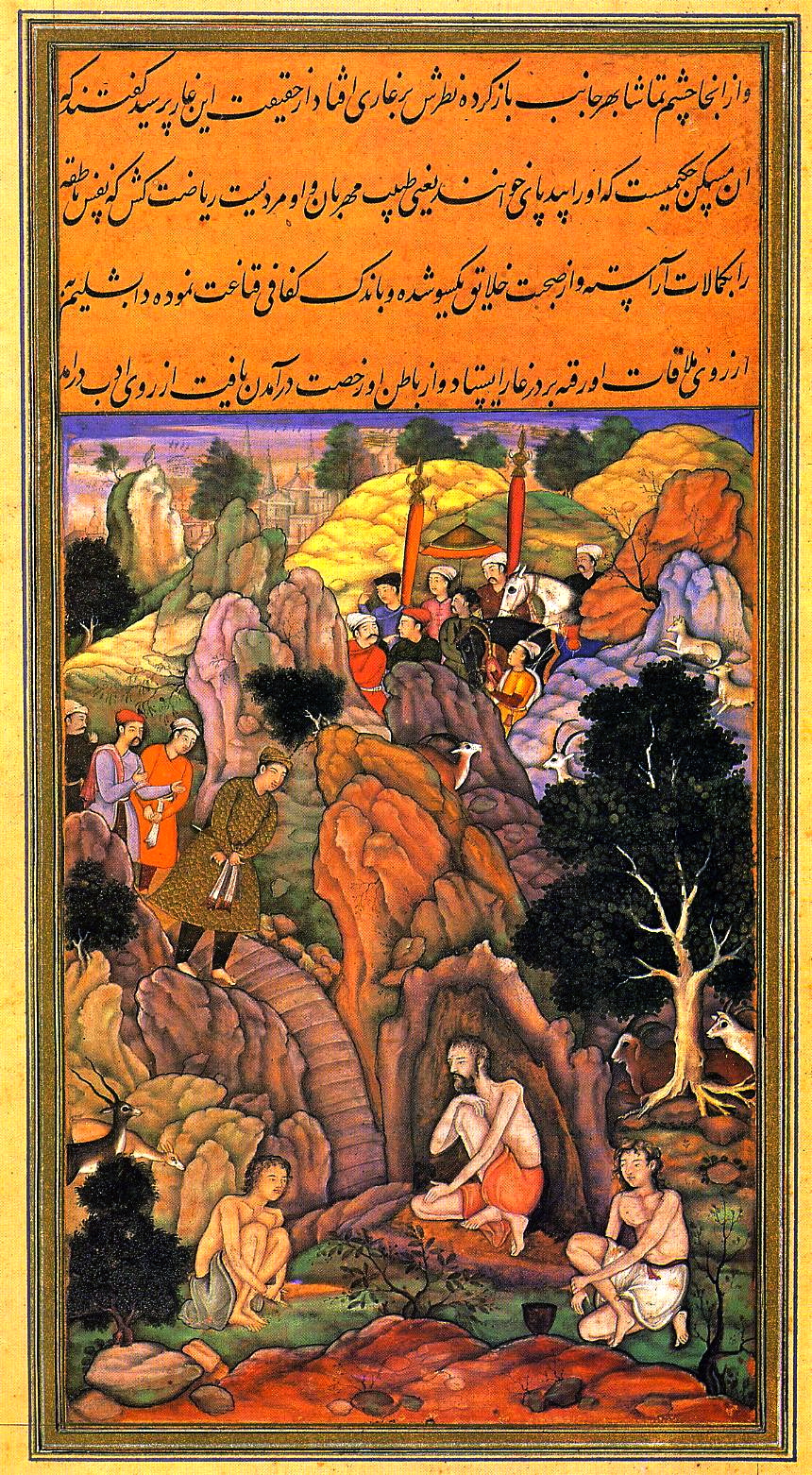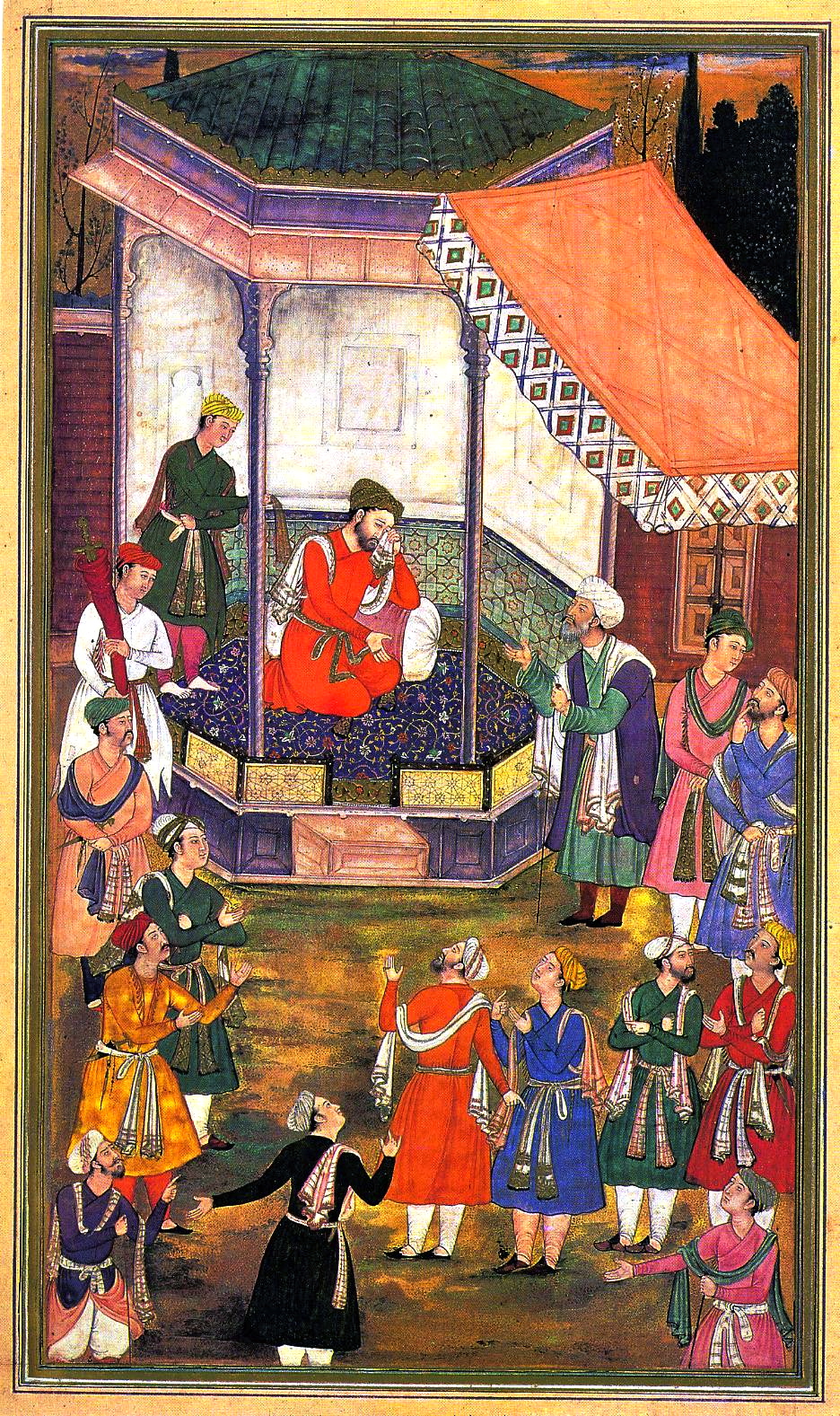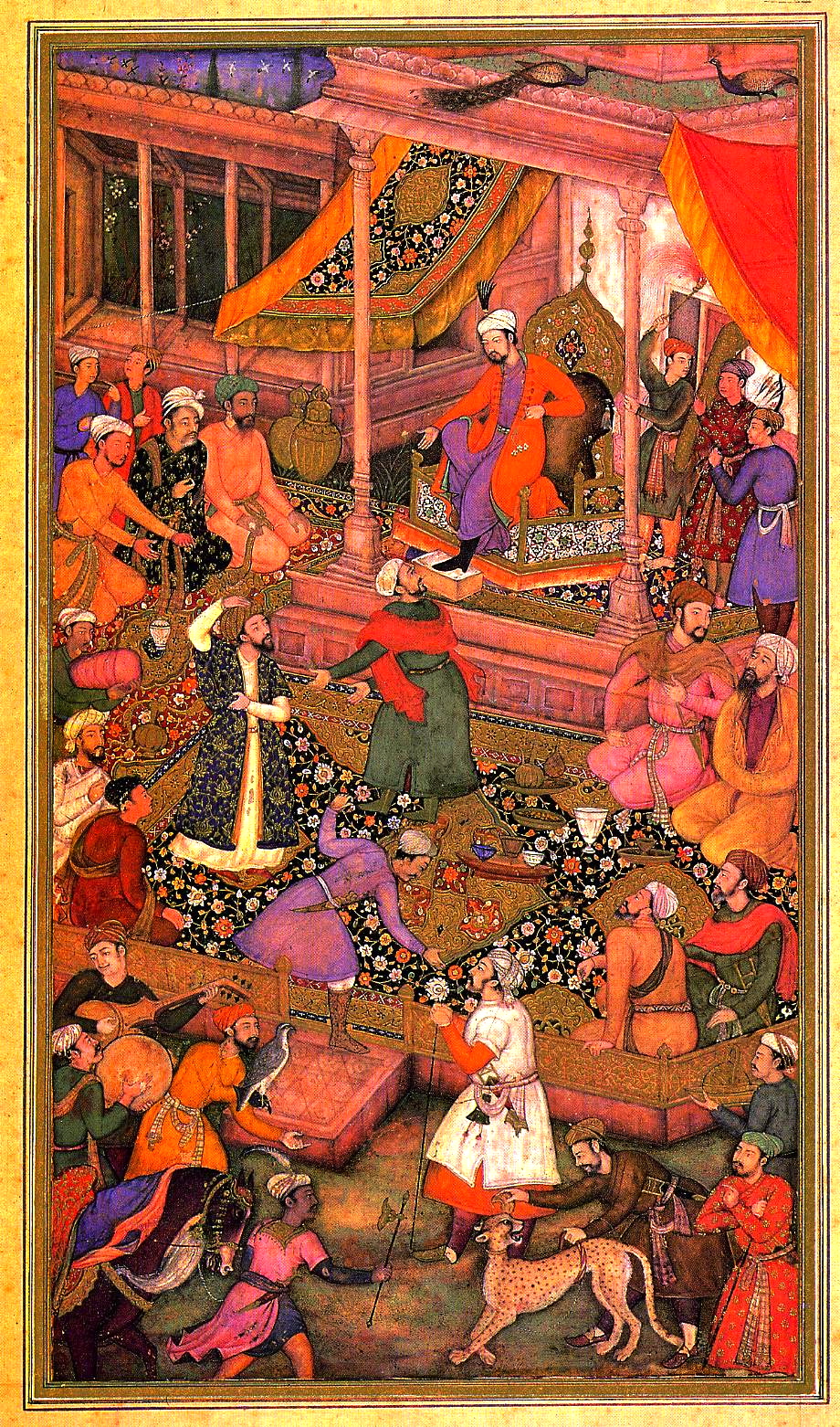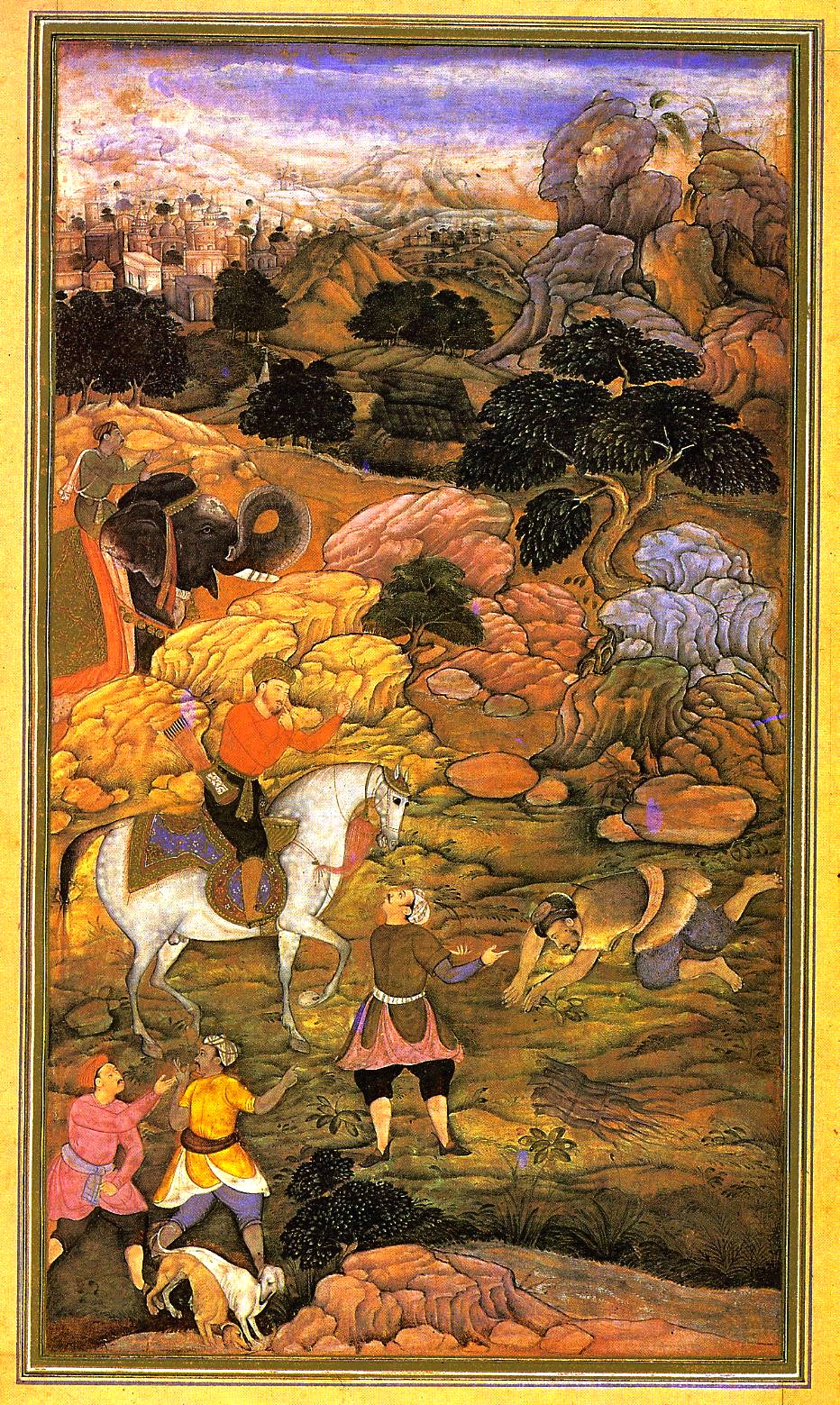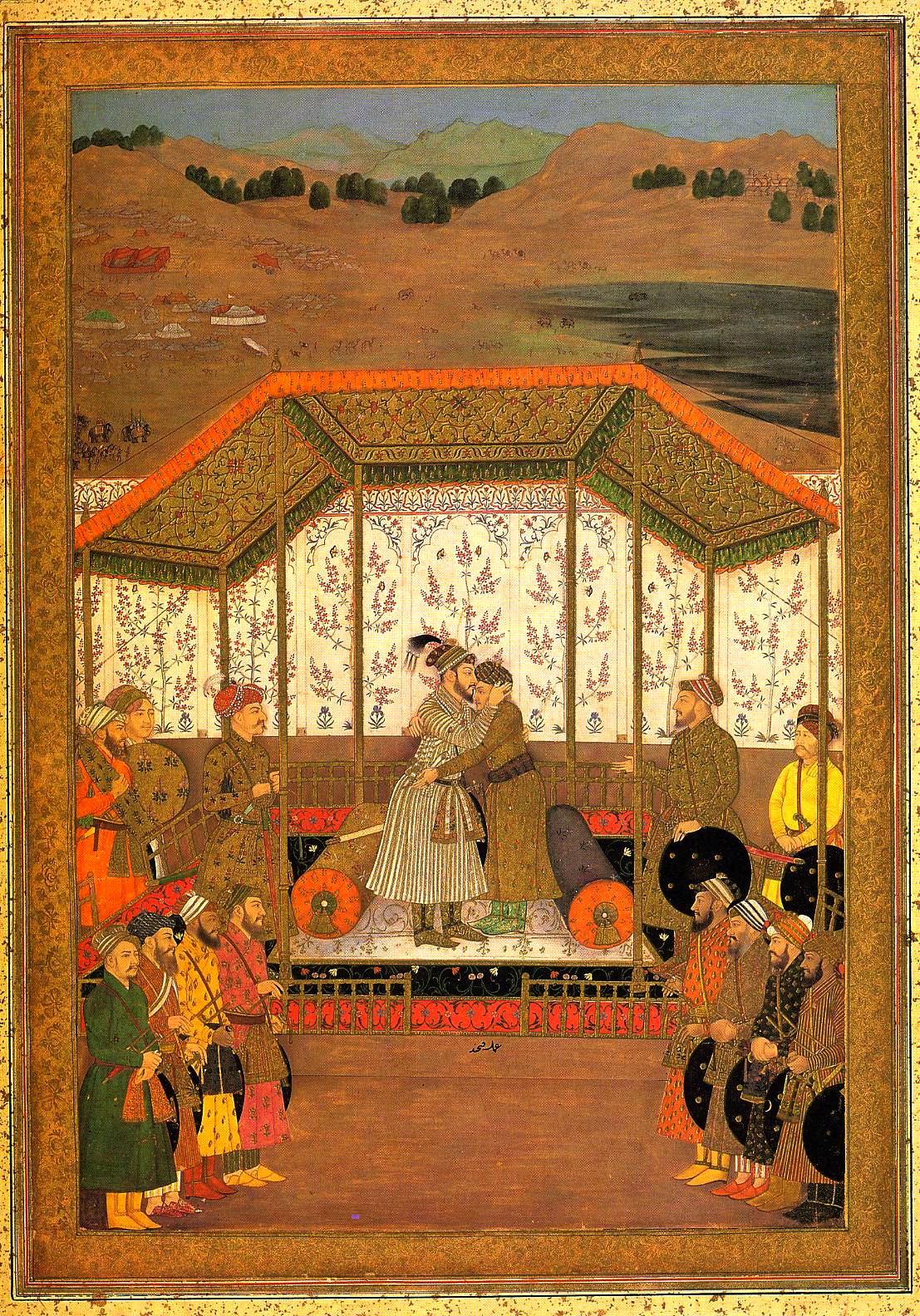Mughal Paintings from the Bharat Kala Bhavan |
 |
|
Mughal painting reached a very high degree of refinement during the last two decades of the
sixteenth century. The activities of Emperor Akbar's sprawling taswirkhana (royal
artists' workshop) were undertaken by painters recruited from across India and beyond.
The imperial atelier was working at a hectic pace to prepare hundreds of paintings commissioned
to illustrate the numerous manuscripts being written to meet the insatiable demands of Akbar. To keep pace with demand, the artists worked on the basis of joint authorship with the master designing the layout and his assistants applying the pigments. Often for the sake of accuracy and authenticity a specialist was called upon to retouch the faces of important figures. In the poetic manuscripts, however, the mood was different and the pace was much slower—only the masters worked, with intense attention to detail, to create a limited number of high quality illustrations taking upon themselves the entire responsibility of designing, drawing, and coloring to perfection, without any assistance. Thus the names of only a handful of master painters are noticed in these manuscripts.—Alok Kumar Das Below are a selection of miniature paintings from the Bharat Kala Bhavan at the Benaras Hindu University in Varanasi. All image descriptions are by Alok Kumar Das. See also paintings from the Royal Ateliers |

